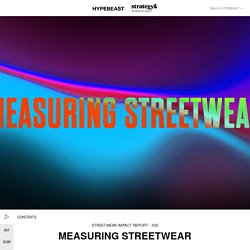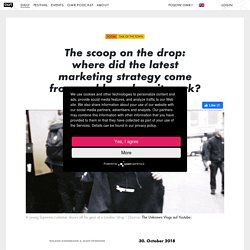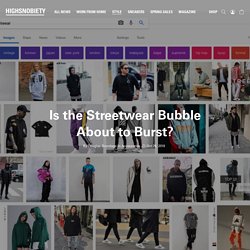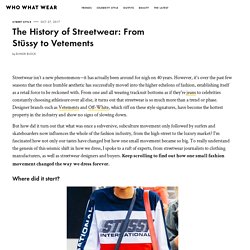

Streetwear Market Statistics & Global Trends. This article is part of the Streetwear Impact Report .

The report includes data collected through two main research methods: our consumer survey and industry survey. Full description of methodology can be found in the Introduction. The report is split into four articles. 001 Defining Streetwear details streetwear’s origin and key cultural components. 002 Measuring Streetwear reports consumer spending habits and preferences. 003 How Streetwear Talks traces the communication loop between consumer and brand. 004 How Streetwear Sells dissects streetwear’s tight-knit direct-to-consumer relationship and retail model. Visit the Executive Summary for a full overview. How (much) the consumer spends The streetwear consumer demands a hybrid of affordability and exclusivity. Relatively low retail prices give consumers of varying financial means an opportunity to buy, while high demand for the product feeds into the resale market, as product hits the secondary market at inflated prices.
The hype machine: Streetwear and the business of scarcity - BBC Worklife. Social investment But unlike a Birkin bag or a DeBeers diamond, the exclusivity of streetwear brands like Supreme isn’t based on price, but because it’s impossible to acquire unless you’re tapped into the subculture.

There’s credibility in owning something that few others managed to grab. “When you own a scarce, fashionable product, you align yourself with an esteemed social group,” says Adam Alter. “You’re investing in your social image.” Because of this, the hypebeast community can be especially critical toward brands that compromise the particular culture they have sought to cultivate. Successful streetwear brands understand the importance of this authenticity, such as Jerry Lorenzo, the founder and designer of the Fear of God chic-grunge clothing line. “At the end of the day, this drop culture really is a trend built for and maintained by a young consumer,” says Booker. “You can’t fake your way into being a sought-after brand.” Social investment. Supreme's "drop" strategy: the clever marketing ploy that redefined product releases.
Is there a bigger boost to a brand’s reputation and popularity than throngs of customers queuing up around the block just to have a chance at getting their hands on its latest merch?

The fashion and lifestyle industry has perfected the practice with the “drop.” While its roots lie in the sneaker and streetwear scene, the tactic is now employed by upscale fashion labels and even made its way online. OMR breaks it down, how it works, its marketing raison d’etre and its excesses. Stroll down Lafayette Street on a given Thursday in New York’s hipster Mecca Soho and you are likely to see throngs of people lined up, literally around the block, waiting to get inside the Supreme store.
The same scene plays out seemingly every week: young people clamoring for the latest “drop,” i.e. the sales start for the streetwear label’s latest offering. 6-figure views on YouTube for drop videos The tendency of employing Supreme-inspired drops at brick and mortar shops shows promise online, too. Is the Streetwear Bubble About to Burst? This story is taken from Issue 17 of Highsnobiety magazine.

You can buy the new issue here. History has shown several instances of “bubbles,” boom and bust periods involving everything from tulips to the American housing market. If the current state of streetwear is any indicator, the golden years of the movement might be about to end with an almighty pop. In 1841, Scottish writer Charles Mackay published Extraordinary Popular Delusions and the Madness of Crowds. The History of Streetwear: From Stüssy to Vetements. After California, the look became popular with youth culture scenes, especially within skateboarding and hip-hop circles in New York.

But it was brands such as NYC-based Supreme, which started in 1994 as a skateboard and clothing shop, that propelled the trend further. Started by James Jebbia, the label quickly garnered a cult following that has only grown over the years. Alec Leach, digital fashion editor for High Snobiety, revealed exactly why Supreme has such longevity. "The way they distribute their clothing is key. Supreme's drop, it's actually a lot like belonging to a football club.
Not only that, but Supreme has also made collaborating with other brands a real art form. What Is Streetwear? Bobby Hundreds Explains.